
Easter weekend we made a trip at South Hungary next to the border Slovenia
In the southwest corner of Vas County you can find this wonderful land with forests and meadows where guardians were settled during the Hungarian conquest. Its name derives from these: Őrség (in English: Guard or Watch post). Since 1st March 2002 the Őrség National Park Directoate has been supervising the preservation of natural, ethnographical, culture-historical values which can be found on this wonderful land. The Őrség National Park consists of the Őrség, Vend country, the unregulated valley of River Rába, the Inner-Őrség and the neighbourhood of Szentgyörgy Valley. All together it covers 44 townships, on about 44.000 acres, whereof 3086 acres are particularly protected. The whole territory of the national park is a Natura 2000 area under European Union-wide Protection. This land is the westernmost part of Hungary, where hills and valleys engraved by brooks, deciduous forests and pinewoods, fresh and green meadows, marshlands preserving plants from the ice age, and crystal clean spring-heads and brooks vary. Here are silence and the fresh air, the cultural traditions. Due to the high annual precipitation this area is rich in springs and brooks. One of the most significant rivers of the territory is the Zala (Szala), which springs north from Szalafő and flows through the Őrség. The other one is the Kerka joining into River Mura. On the North border of the National Park mainly the River Rába flows which is rough water, uncontrolled river.
63% of the Őrség is covered by woods and forests, which is 3,5 times more than the nationwide average. This area is the richest in mushrooms nationwide. You can find the delicious bolete, yellow chanterelle and various species of russula. Beside the well-known mushroom species real specialities can be found as well, as the Hygrocybe and Hygrophorus fungus which is the peculiarity of the Alps. The valuable bird species of the countryside are the black stork, the honey-buzzard, the corncrake, the blue pigeon, the crossbill, the bullfinch and the firecrest. The game population is significant as well, wild-boar, roe and red deer also occurs there. Őrség is also rich in folk architectural and cultural-historical relics. The settlement structure shows a unique picture, these are the so-called ‘szeres’ settlements. The ‘szerek’ are groups of houses built on the hill top, which structure comes from the time of
Hungarian conquest. The most well-known house types are the smoky-kitchen houses, furthermore the so called rounded houses. These buildings can be seen at their original place and environment in Szalafő-Pityerszer at the Őrség Folk Monument Ensembles. Belfries also count as folk architecture masterpieces. The Vend-country is characterized by the so-called sparse settlement structure. Building stone castles was not typical in the historical Őrség, the medieval fortress-type churches took over their role. Őriszentpéter and Velemér ancient monument churches are nice examples for these relics.
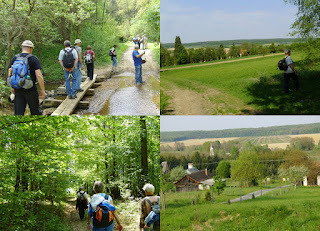

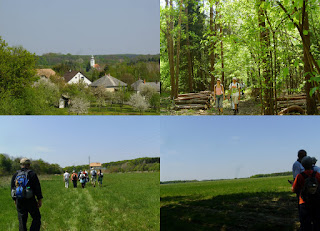
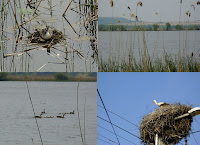
Osterwochenende machten wir einen Ausflug in Südungarn an der Grenze Slowenien
Eingebettet zwischen Wäldern und Auen befindet sich diese herrliche Landschaft in der südwestlichen Ecke Ungarns, wohin die landnehmenden Magyaren Warten zur Verteidigung des Tores nach Westen aufgestellt haben. Daher stammt auch der
Name der Region: Õrség (= Warte auf Deutsch).
Die Õrség ist die einzige Region in Ungarn, in der die Bewohnerschaft seit der Landnahme in ununterbrochener Sesshaftigkeit lebt. Durch die Jahrhunderte über haben die Leute hierzulande das Gesicht der Landschaft in einer Harmonie mit der Natur geformt und haben mit ihrer Kleinparzellenwirtschaft und mit ihren in die Landschaft anschmiegenden Gebäuden eine langfristig erhaltbare Vielfalt geschaffen. In dieser Landschaft wechseln sich durch Hügel und von Bächen gebohrte Täler, Laub- und Tannenwälder, sanfte und grüne Wiesen, Restfauna aus der Eiszeit, die aus der Eiszeit stammende Restflora bewahrenden Moorwiesen, kristallklare Quellen und Bäche. Die Ruhe, die frische Luft, die unverändert bewahrte Volkstraditionen und Gewerbe (Flechten von Obstdörrkörben, Töpferei, Kürbiskernölpressung), sowie Bräuche und die Produkte aus der eigenen Bauernwirtschaft (Kürbiskernöl, Honigschnaps, Geiß- und Kuhkäse) ziehen Besucher und Besucherinnen an. Der Nationalpark der Region Õrség schafft den geschützten Rahmen für die Bewahrung naturbedingter, kulturhistorischer und folkloristischer Werte in der Landschaft. Die Anzahl der zum Naturschutz erklärten Floraartan liegt über Hundert. Die blumigen Heuwiesen und nassen Wiesen, Obstwiesen, weit verbreiteten Wälder, die vielfältige Schmetterlingsfauna und der bunte Wildbestand bieten ebenfalls ein pures Erlebnis vom Eintauchen in die Natur. Die lokalen Gegebenheiten verleihen das ideale Gelände für die Fans des Schwammerlsuchens. Die Weilersiedlungen bzw. zerstreuten Siedlungen, die volkstümlichen Wohnhäuser, die Glockenstühle, die Kirchen aus der Árpád-Zeit oder die volkstümliche Denkmalgruppe und die Welt der Gehöfte bieten eine reiche Palette an kulturellen Werten.
Typical old houses / Typische alte Häuser
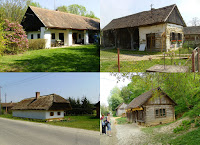
Churches / Kirchen
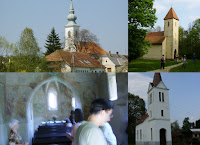
Bell-towers / Glockentürme
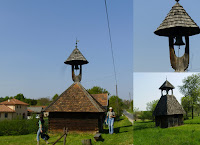
We not only walked:) / Abends Moments

















